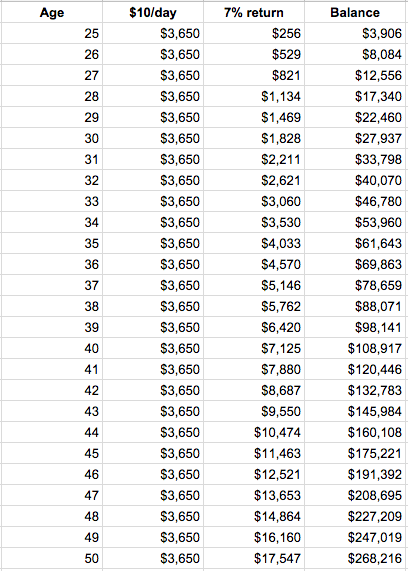
Long-term investing is about focusing on the drivers for long-term cash flows and not short-term price fluctuations. In contrast, short-term investors are more concerned with short-term fluctuations than long-term cash flows and behave like traders. Long-term investors concentrate on long-term cash flows as well as value drivers. These approaches may differ slightly in some ways but they both stress the importance of diversification. We'll be talking about long-term investing and stock selection in the following discussion.
Investment horizon shifts from price drivers to value drivers for long-term investors
Long-term investors now shift from price drivers towards value-based variables, which include cash flow and reinvestment. While both types of investors are interested in current profits, the long-term horizon is characterized by the importance of these elements. Value investors pay attention to current operating income. Growth investors pay attention to the potential for creating new value. GARP investors focus on the balance in price and cashflow.
A key characteristic for long-term investors are their ability to long-term invest. They can concentrate on long-term outcomes and have little to no emotional motivation to trade. This means that they can choose when they buy or sell. Using discretion over trading allows long-term investors to focus on identifying investments with real potential for long-term value. But, being able to trade with discretion does not guarantee success in investing.

Portfolio design for long-term investors
Investment portfolios are an essential part of your financial plan. They help to convert hard-earned savings and make enough money. The design of an investment portfolio involves choosing the right mix and selecting securities from these categories. You also need to monitor your investments. Investors who are successful understand the importance to diversify their portfolios. They place more emphasis on the fundamentals than short-term market volatility. These are some ideas to help you design an investment portfolio.
Portfolio design includes asset allocation. This is the process of allocating capital among different assets according to their potential returns and risks. Investors may choose to split equity investments across different industries, companies, or domestic and foreign stocks. An investor might choose to divide the bond portion between short-term or long-term bonds, corporate debt versus government debt.
Tracking dividends
If you're a long-term invester, you should also track capital gains and dividends. Dividend investing is one of the most powerful strategies available for accumulating wealth, and it can be applied over a long time period. Dividend aristocrats include well-established companies that have steadily increased their dividend payouts in the last 25 years. These stocks are popular brands that will generate steady cash flow.
It is important to note that dividends have a lower volatility than stock prices. This is due to the fact that they reflect the true earning ability of a company. Tracking dividends can be crucial to long-term investments, whether you are using the dividends to support your lifestyle or supplement your cash portfolio. You must log all of your investments into a software platform like Sharesight if you want to be a long-term investor. This software allows you to track your monthly income and distributions, filtering by dividend payment amount.

For long-term success, teamwork is key to successful investing
Being part of a group offers many opportunities for personal and professional growth. You will be able to draw on different skills and experiences when working in a group, unlike an individual. By working together, you will benefit from one another's knowledge and help build your team. Likewise, a team environment allows you to collaborate with new members and be more effective. Being open to new ideas is a great way to benefit.
Teams are people who share a common goal. Teams must work together to achieve a common goal. This applies to both large corporations and sports teams, as well to personal relationships. As a team player, it is important to be open to constructive criticism and to offer suggestions. If you listen to and accept the suggestions of others, your investment strategies can be improved.
FAQ
How do I wisely invest?
It is important to have an investment plan. It is essential to know the purpose of your investment and how much you can make back.
Also, consider the risks and time frame you have to reach your goals.
This will allow you to decide if an investment is right for your needs.
Once you have settled on an investment strategy to pursue, you must stick with it.
It is better not to invest anything you cannot afford.
How long does it take for you to be financially independent?
It depends on many variables. Some people are financially independent in a matter of days. Some people take years to achieve that goal. It doesn't matter how much time it takes, there will be a point when you can say, “I am financially secure.”
It's important to keep working towards this goal until you reach it.
Can I invest my 401k?
401Ks offer great opportunities for investment. However, they aren't available to everyone.
Employers offer employees two options: put the money in a traditional IRA, or leave it in company plan.
This means you can only invest the amount your employer matches.
Taxes and penalties will be imposed on those who take out loans early.
Can I lose my investment.
Yes, it is possible to lose everything. There is no such thing as 100% guaranteed success. There are ways to lower the risk of losing.
One way is to diversify your portfolio. Diversification allows you to spread the risk across different assets.
Stop losses is another option. Stop Losses allow you to sell shares before they go down. This reduces your overall exposure to the market.
Margin trading is also available. Margin Trading allows to borrow funds from a bank or broker in order to purchase more stock that you actually own. This increases your chances of making profits.
Statistics
- Over time, the index has returned about 10 percent annually. (bankrate.com)
- 0.25% management fee $0 $500 Free career counseling plus loan discounts with a qualifying deposit Up to 1 year of free management with a qualifying deposit Get a $50 customer bonus when you fund your first taxable Investment Account (nerdwallet.com)
- An important note to remember is that a bond may only net you a 3% return on your money over multiple years. (ruleoneinvesting.com)
- According to the Federal Reserve of St. Louis, only about half of millennials (those born from 1981-1996) are invested in the stock market. (schwab.com)
External Links
How To
How to invest stocks
Investing can be one of the best ways to make some extra money. It is also considered one the best ways of making passive income. There are many options available if you have the capital to start investing. It's not difficult to find the right information and know what to do. The following article will show you how to start investing in the stock market.
Stocks are shares of ownership of companies. There are two types, common stocks and preferable stocks. Common stocks are traded publicly, while preferred stocks are privately held. The stock exchange trades shares of public companies. They are priced based on current earnings, assets, and the future prospects of the company. Stock investors buy stocks to make profits. This process is called speculation.
There are three steps to buying stock. First, you must decide whether to invest in individual stocks or mutual fund shares. The second step is to choose the right type of investment vehicle. Third, decide how much money to invest.
Select whether to purchase individual stocks or mutual fund shares
Mutual funds may be a better option for those who are just starting out. These mutual funds are professionally managed portfolios that include several stocks. You should consider how much risk you are willing take to invest your money in mutual funds. Certain mutual funds are more risky than others. If you are new or not familiar with investing, you may be able to hold your money in low cost funds until you learn more about the markets.
You should do your research about the companies you wish to invest in, if you prefer to do so individually. Before you purchase any stock, make sure that the price has not increased in recent times. It is not a good idea to buy stock at a lower cost only to have it go up later.
Choose Your Investment Vehicle
Once you've made your decision on whether you want mutual funds or individual stocks, you'll need an investment vehicle. An investment vehicle is simply another method of managing your money. You can put your money into a bank to receive monthly interest. You could also establish a brokerage and sell individual stock.
You can also establish a self directed IRA (Individual Retirement Account), which allows for direct stock investment. Self-directed IRAs can be set up in the same way as 401(k), but you can limit how much money you contribute.
Your needs will determine the type of investment vehicle you choose. Are you looking to diversify, or are you more focused on a few stocks? Are you looking for stability or growth? How confident are you in managing your own finances
The IRS requires investors to have full access to their accounts. To learn more about this requirement, visit www.irs.gov/investor/pubs/instructionsforindividualinvestors/index.html#id235800.
Find out how much money you should invest
You will first need to decide how much of your income you want for investments. You can set aside as little as 5 percent of your total income or as much as 100 percent. You can choose the amount that you set aside based on your goals.
For example, if you're just beginning to save for retirement, you may not feel comfortable committing too much money to investments. You might want to invest 50 percent of your income if you are planning to retire within five year.
It is crucial to remember that the amount you invest will impact your returns. Before you decide how much of your income you will invest, consider your long-term financial goals.